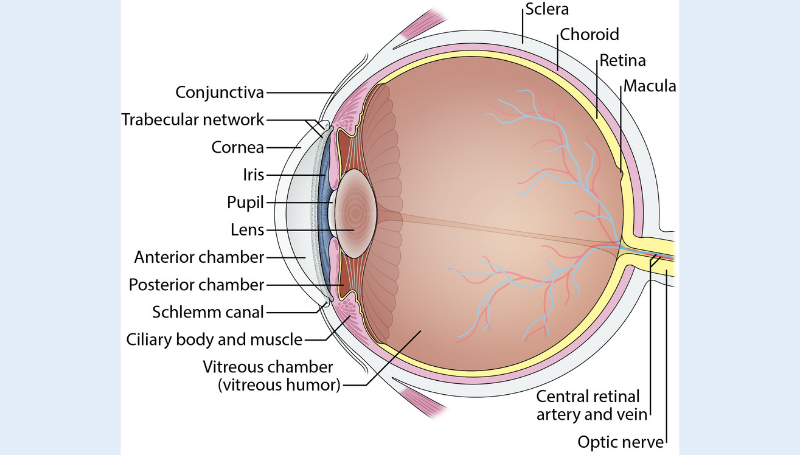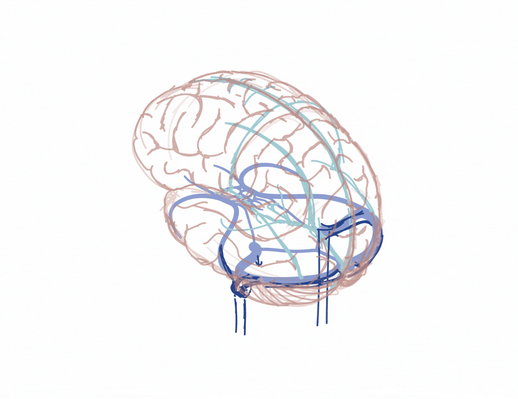
We’re pulling back the curtain and offering up a behind-the-scenes look at one of the most colorful departments at MedStudy: Medical Illustration. The folks in this department are responsible for the many and varied exquisitely-drawn figures and illustrations you see across the MedStudy products, and their work truly sets us apart.
 So, we sat down with one of our medical illustrators, Rebecca Gelernter, to pick her brain about her cool job. Blending art and science? Yes, please!
So, we sat down with one of our medical illustrators, Rebecca Gelernter, to pick her brain about her cool job. Blending art and science? Yes, please!
First, here’s a little background on Rebecca, who is not only a medical illustrator, but also a scientific illustrator. She tells us that medical illustration is a subset of scientific illustration, but you should know that she creates both.
History of a medical illustrator
An artist and the daughter of geneticist and clinical psychologist parents, Rebecca has always been drawn to creativity and science. She majored in behavioral biology at Boston University and began to learn about science illustration online.
After college, Rebecca volunteered at the Yale Peabody Museum, a 150-year-old natural history museum in Connecticut, where she painted models for the Hall of Connecticut Birds, among other endeavors.
Deciding science illustrating was definitely for her, Rebecca made her way to California State University at Monterey Bay to earn her graduate degree in the subject. (Doesn’t drawing all day on the beach sound like a dream?!)

And we’re so glad she did! Not only does Rebecca create gorgeous medical illustrations for MedStudy, but you’ll find her name in many journals and papers. Among these scientific illustrator endeavors are a few Paleo art projects (Paleo art is the drawing of extinct animals). But her favorite thing to draw? Birds.
What does a medical illustrator do?
Now that you know how to become a medical illustrator (or at least how Rebecca did it!), let’s dive into the day-to-day.
As mentioned above, Rebecca is busy, creating as many as ten beautiful, full-color drawings a day. You'll see her work in most MedStudy products including the new Student System and the Pediatrics Core.
Flow of cerebrospinal fluid from MedStudy Core
Rebecca's work process begins with a request from a MedStudy writer who outlines the details of the requested illustration including example figures with notes on what to emphasize. Then she rolls up her sleeves and pops open a tome by Dr. Frank H Netter M.D., renowned medical illustrator.
Insisting on accurate portrayal, Rebecca proceeds to gather information inspiration from multiple sources including Gray’s Anatomy, videos, and even general internet photos of specimens.
“I've gone down some serious rabbit holes,” she explains. “I sometimes have to find papers describing extremely fine details, like the typical branching of the laryngeal artery. My source folder for that figure has 164 images and PDFs!”

The progression of medical illustration of the dural venous sinuses
The trick? Making sure she doesn’t accidentally infringe on copyrights by relying too heavily on one source.
Medical art sometimes takes liberties for the purpose of education. One artistic inaccuracy most sources share: Blue veins and red arteries. It's become convention to draw veins as blue, and this is instinctively understood by most readers. This trend may stem from the misconception that venous blood is blue because veins appear blue beneath the skin. While we know that venous blood is red, this has been the convention for well over 100 years.
Blue veins in medical art is an example of the perpetuation of “illustrative memes” and can be confusing sometimes. Memes, in this sense, mean an idea, behavior, style, or usage that spreads from one person to another. NOT the amusing content you’ll find on our Instagram feed. The blue vein meme in particular doesn’t seem to do any harm in its misrepresentation. In fact, it can be a useful learning tool in teaching complex anatomy.
Memes, in this sense, mean an idea, behavior, style, or usage that spreads from one person to another. NOT the amusing content you’ll find on our Instagram feed.
Back to the creative process… Once satisfied with her sources, Rebecca draws everything digitally on a tablet with a stylus and works mostly in Adobe Illustrator. The beauty of her many years with MedStudy is that she can often assemble an illustration based on older assets, correcting and updating on an as-needed basis.
Some drawings take as long a week to complete; others are so quick that Rebecca can knock out ten in a day. And these illustrations are works of art that help shape physicians into knowledgeable and confident practitioners with the skills to help every patient they meet. More proof that Rebecca has a (ahem) super-cool job.
Let’s talk about race
Why is a medical illustrator important and why do we use it so much, you might ask? Well, here’s one of the best reasons: inclusivity.
.png?width=400&name=Copy%20of%20diversity%20image%20(2).png) Diversity in medical illustration employs a wide range of values when it comes to skin tone palette
Diversity in medical illustration employs a wide range of values when it comes to skin tone palette
Working hard to incorporate a wide “range of values” when it comes to skin tone color palette, the illustration team is acutely aware of diversity in the drawings she creates as well as the photos she selects for inclusion in MedStudy products. For example, flipping through the Core, you’ll find drawings and photographs that feature many skin tones.
“More diversity is needed in medical photography and art,” she explains. “Doctors who have never learned what skin cancer looks like on a Black person are less likely to diagnose it accurately. Without those diagnostic tools, people of color simply don’t get an appropriate level of care.”
What does medical illustration mean for you?
Medical illustrations are one of the most effective learning tools out there. MedStudy materials are packed-full of accurate drawings and figures that truly set our products apart. For example:
| Medical Student Core | +2,000 Images & Figures |
| 10th Edition Pediatrics Core | +500 Images & Figures |
| 19th Internal Medicine Core | +400 Images & Figures |
So the next time you’re flipping through your MedStudy material, take a close look at the beautifully illustrated images. They were certainly created to make learning easier with care and great skill.
Plus, we're constantly working to make our products even better for you. Have an idea for how we can make MedStudy products better? We’d love to hear it.


